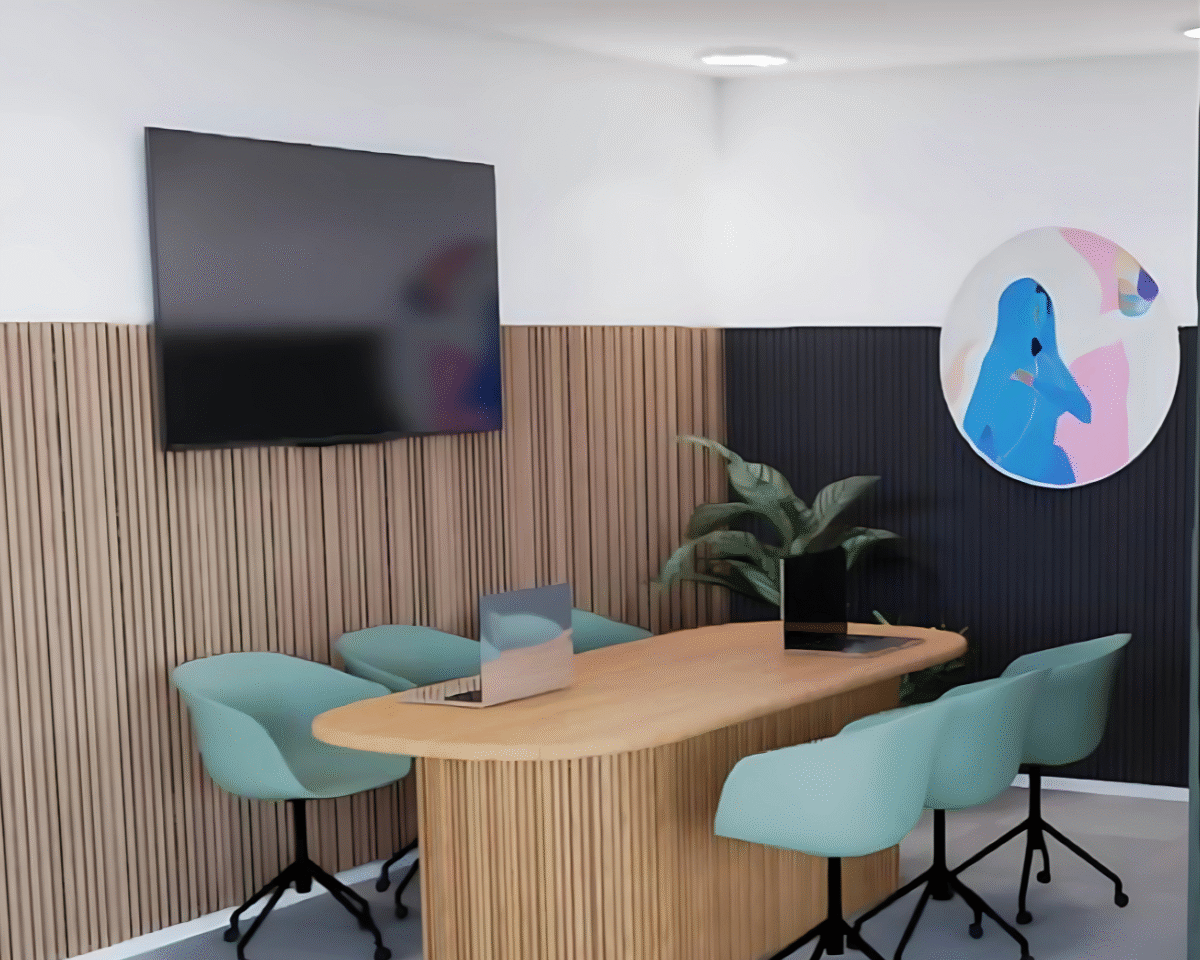The Data Behind Virtual Reality Adoption in Real Estate
The conversation around virtual reality in real estate has shifted from “should we adopt this?” to “how quickly can we implement it?” The numbers tell a compelling story about an industry in the midst of technological transformation. With the global VR in real estate market estimated at $17.22 billion in 2025 and projected to reach $36.12 billion by 2034, we’re witnessing more than a trend—we’re seeing fundamental change in how properties are marketed and sold.
At Outer Realm, we’ve been at the forefront of this transformation, and the data we’re seeing aligns with broader industry trends that validate what we’ve long believed: immersive visualization isn’t the future of real estate marketing—it’s the present.
What the Numbers Really Tell Us
When Goldman Sachs estimated that 1.4 million realtors would be using VR technology by 2025, some dismissed it as overly optimistic. Yet here we are, and those projections appear to have been accurate. The adoption curve has been steeper than many anticipated, driven by buyer demand and competitive necessity rather than technological novelty.
What’s particularly telling is where adoption is concentrated. Research shows that 70% of top-tier developers are now utilizing augmented reality and virtual reality in real estate. This isn’t experimental deployment—this is mainstream integration at the highest levels of the industry. When the majority of leading developers embrace a technology, it stops being cutting-edge and becomes essential infrastructure.
Outer Realm has witnessed this shift firsthand through our client partnerships. What began as requests for “something innovative” has evolved into requirements for comprehensive virtual experiences as standard deliverables. Developers now ask not whether they should invest in VR tours, but how quickly we can deliver them.
Consumer Preference Drives Market Reality
Perhaps the most powerful statistic shaping the industry comes from consumer behavior: 62% of Americans indicate they would be more likely to choose a real estate agent who uses virtual reality. This preference isn’t marginal—it represents a significant competitive advantage for agents and developers who embrace immersive technology.
The implications extend beyond agent selection. When more than half of potential buyers express preference for virtual reality -enabled services, the market responds. Properties marketed with virtual tours consistently outperform comparable listings using traditional photography alone. At Outer Realm, our clients report measurably higher engagement rates, longer viewing sessions, and stronger buyer confidence when comprehensive virtual reality experiences are available.
This consumer preference manifests most powerfully in pre-construction sales, where buyers must commit to properties that exist only as concepts. Virtual reality bridges the confidence gap that has historically limited pre-sale success rates. When buyers can virtually walk through spaces, understanding spatial relationships and experiencing design intent, their willingness to commit increases substantially.
The Engagement Metric

Raw adoption numbers tell part of the story, but engagement metrics reveal the true impact. Virtual reality engagement in the real estate sector increased by 184% in recent years, indicating not just more people using the technology, but dramatically higher levels of interaction once they experience it.
This engagement surge makes intuitive sense. Traditional property photography offers passive viewing—buyers scroll through images, forming impressions based on static compositions. Virtual reality transforms passive viewing into active exploration. Buyers control their experience, spending time in spaces that interest them most, examining details that matter to their specific needs.
Outer Realm’s analytics support these broader industry findings. Our virtual tours regularly generate session times three to four times longer than traditional photo galleries. Buyers don’t just glance at virtual reality tours—they explore them thoroughly, returning multiple times before making contact with sales teams. This extended engagement creates familiarity and emotional connection that static media simply cannot achieve.
Market Growth Trajectories
The projected growth in VR real estate applications suggests we’re still in early stages despite widespread current adoption. The metaverse in real estate market is projected to grow from $4.12 billion in 2025 to $67.40 billion by 2034, expanding at a CAGR of 36.55%. This explosive growth forecast indicates that current implementations represent just the beginning of what’s possible.
For companies like Outer Realm, these projections validate strategic focus on immersive visualization technologies. As the market expands, sophistication increases. What impresses buyers today becomes baseline expectation tomorrow, driving continuous innovation in rendering quality, interactivity, and integration with other real estate technologies.
The growth isn’t limited to luxury markets, either. As technology costs decrease and buyer expectations normalize around virtual experiences, adoption is spreading across all price points. Mid-market developments that once viewed virtual reality as unnecessary expense now recognize it as competitive requirement.
Real-World Impact on Property Sales
Statistics about market size and adoption rates matter, but the numbers that drive business decisions are simpler: does virtual reality actually help sell properties? The answer, based on accumulating data, is definitively yes.
“84% of real estate professionals agreed that virtual reality helps them close deals, according to industry research. “
This professional consensus reflects measurable outcomes—shorter sales cycles, higher conversion rates from inquiry to offer, and increased buyer satisfaction throughout the transaction process.
Outer Realm clients consistently report these benefits. One recent development utilizing our comprehensive VR tour solution achieved 40% higher pre-sale rates compared to previous projects marketed with traditional methods. Another client reduced their average time-to-sale by three weeks, attributing the improvement to buyer confidence generated through virtual experiences.
These outcomes aren’t anomalous. When buyers can thoroughly explore properties virtually, they arrive at in-person showings already confident in their interest. This pre-qualification effect streamlines the sales process, reducing time wasted on poor-fit prospects and allowing sales teams to focus effort where conversion probability is highest.
The Inventory Challenge and Virtual Solutions
Current real estate market conditions add urgency to virtual reality adoption. Active listings increased 23.1% year-over-year in June 2025 and are up 44.9% compared to 2023, marking the highest inventory levels since 2021. In a market with growing inventory, differentiation becomes critical.
Properties compete not just on features and price, but on marketing quality and accessibility. Virtual reality tours provide immediate differentiation in crowded listings. When buyers compare similar properties, the one offering immersive virtual exploration holds distinct advantage over competitors relying solely on photography.
Outer Realm’s approach to this challenge emphasizes not just creating VR tours, but crafting experiences that highlight each property’s unique value proposition. Strategic camera placement, thoughtful lighting design, and integration of contextual information transform generic virtual tours into compelling narratives that resonate with target buyers.
Millennial Buyers Drive Technology Adoption
Demographic trends further accelerate VR adoption in real estate. 43% of homebuyers are Millennials, a generation that grew up with digital technology and expects sophisticated online experiences. This demographic doesn’t view virtual tours as novel—they view them as standard expectation.
For developers targeting millennial buyers, comprehensive virtual experiences aren’t optional extras—they’re baseline requirements. This generation conducts extensive online research, values convenience and efficiency, and makes major decisions based on digital interactions. Properties marketed without robust virtual experiences simply don’t compete effectively for millennial attention.
Outer Realm designs virtual experiences with this reality in mind. Our tours incorporate interactive elements, mobile optimization, and sharing capabilities that align with how millennials actually engage with property content. The goal isn’t just showcasing spaces—it’s creating sharable, engaging content that fits naturally into digital-first buying journeys.
Looking at the Full Picture
These statistics collectively paint a clear picture: virtual reality adoption in real estate isn’t speculative—it’s factual, measurable, and accelerating. The technology has moved beyond early adopter phase into mainstream implementation, driven by consumer preference, professional recognition of value, and competitive necessity.
For developers, agents, and marketers still questioning whether to invest in virtual reality capabilities, the data answers decisively. The question isn’t whether virtual reality works—the evidence confirms it does. The question is how quickly organizations can implement comprehensive virtual experiences before competitive disadvantage becomes insurmountable.
At Outer Realm, we’re committed to staying ahead of these trends, continuously evolving our capabilities to deliver the immersive experiences that today’s market demands and tomorrow’s market will expect as baseline. The numbers don’t lie: virtual reality isn’t coming to real estate—it’s already here, transforming how properties are marketed, experienced, and sold.
The developers and agents thriving in this new reality aren’t waiting for further proof. They’re implementing now, learning continuously, and building competitive advantages that compound as the market continues its rapid evolution toward virtual-first property marketing.
Ready to Transform Your Listings with 3D Interactive Walkthroughs?
Contact Us Today or Call (212) 655-4626.


